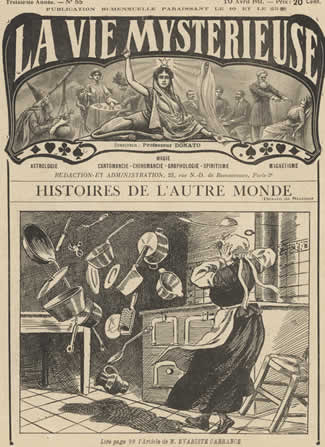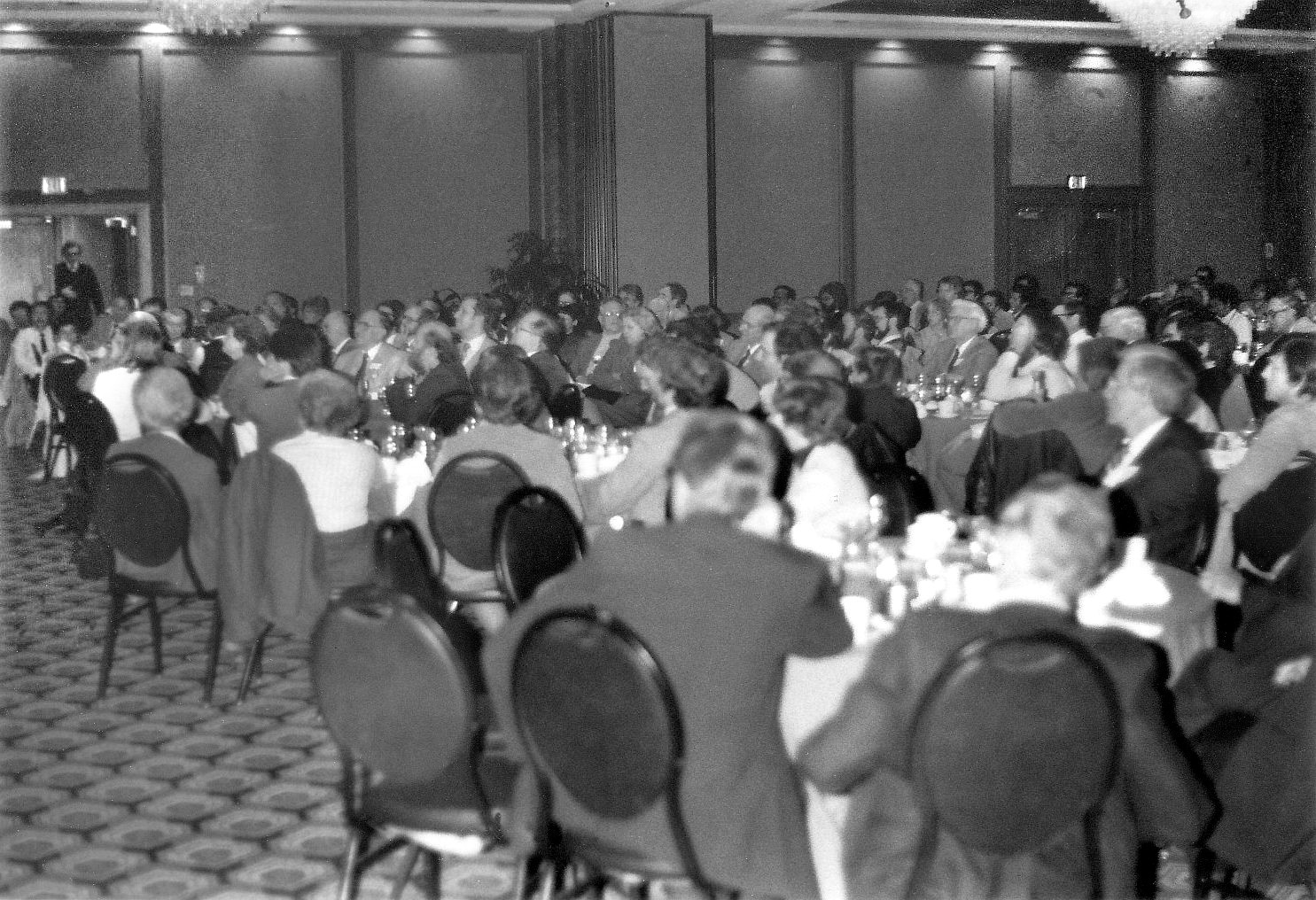|
Columbus Poltergeist Case
Tina Resch (also goes by her full name Christina Elaine Boyer, born October 23, 1969) was a central figure in a series of incidents that came to be called the Columbus poltergeist case. In 1984, alleged telekinesis events at her Columbus, Ohio home drew significant news media interest. A series of color photographs taken by photojournalist Fred Shannon, and published by ''The Columbus Dispatch'', were purported to show Resch sitting in an armchair with a telephone handset and phone cord flying in front of her. Resch's story, and Shannon's photography, were featured on a 1993 episode of ''Unsolved Mysteries''. Skeptics and debunkers pointed out that much of the proclaimed evidence was anecdotal and thin and declared the case to be a hoax. Paul Kurtz wrote that Resch was "a disturbed teenager" who faked poltergeist phenomena because she "craved attention". Resch was married and divorced twice, and had a child named Amber Boyer. In 1994, facing a potential death penalty if she agr ... [...More Info...] [...Related Items...] OR: [Wikipedia] [Google] [Baidu] |
Psychokinesis
Telekinesis () (alternatively called psychokinesis) is a purported psychic ability allowing an individual to influence a physical system without physical interaction. Experiments to prove the existence of telekinesis have historically been criticized for lack of proper scientific control, controls and repeatability. There is no reliable evidence that telekinesis is a real phenomenon, and the topic is generally regarded as pseudoscience. Reception Evaluation There is a broad scientific consensus that telekinetic research has not produced a reliable demonstration of the phenomenon. A panel commissioned in 1988 by the United States National Research Council to study paranormal claims concluded that:despite a 130-year record of scientific research on such matters, our committee could find no scientific justification for the existence of phenomena such as extrasensory perception, mental telepathy or "mind over matter" exercises... Evaluation of a large body of the best available ev ... [...More Info...] [...Related Items...] OR: [Wikipedia] [Google] [Baidu] |
Sentence (law)
In criminal law, a sentence is the punishment for a crime ordered by a trial court after conviction in a criminal procedure, normally at the conclusion of a trial. A sentence may consist of imprisonment, a fine, or other sanctions. Sentences for multiple crimes may be a concurrent sentence, where sentences of imprisonment are all served together at the same time, or a consecutive sentence, in which the period of imprisonment is the sum of all sentences served one after the other. Additional sentences include intermediate, which allows an inmate to be free for about 8 hours a day for work purposes; determinate, which is fixed on a number of days, months, or years; and indeterminate or bifurcated, which mandates the minimum period be served in an institutional setting such as a prison followed by street time period of parole, supervised release or probation until the total sentence is completed. If a sentence is reduced to a less harsh punishment, then the sentence is sai ... [...More Info...] [...Related Items...] OR: [Wikipedia] [Google] [Baidu] |
Adolescent
Adolescence () is a transitional stage of human physical and psychological development that generally occurs during the period from puberty to adulthood (typically corresponding to the age of majority). Adolescence is usually associated with the teenage years, but its physical, psychological or cultural expressions may begin earlier or end later. Puberty typically begins during preadolescence, particularly in females. Physical growth (particularly in males) and cognitive development can extend past the teens. Age provides only a rough marker of adolescence, and scholars have not agreed upon a precise definition. Some definitions start as early as 10 and end as late as 30. The World Health Organization definition officially designates adolescence as the phase of life from ages 10 to 19. Biological development Puberty in general Puberty is a period of several years in which rapid physical growth and psychological changes occur, culminating in sexual maturity. The average ... [...More Info...] [...Related Items...] OR: [Wikipedia] [Google] [Baidu] |
Video Camera
A video camera is an optical instrument that captures videos, as opposed to a movie camera, which records images on film. Video cameras were initially developed for the television industry but have since become widely used for a variety of other purposes. Video cameras are used primarily in two modes. The first, characteristic of much early broadcasting, is live television, where the camera feeds real time images directly to a screen for immediate observation. A few cameras still serve live television production, but most live connections are for security, military/tactical, and industrial operations where surreptitious or remote viewing is required. In the second mode the images are recorded to a storage device for archiving or further processing; for many years, videotape was the primary format used for this purpose, but was gradually supplanted by optical disc, hard disk, and then flash memory. Recorded video is used in television production, and more often surveillance and m ... [...More Info...] [...Related Items...] OR: [Wikipedia] [Google] [Baidu] |
Skeptical Inquirer
''Skeptical Inquirer'' (S.I.) is a bimonthly American general-audience magazine published by the Committee for Skeptical Inquiry (CSI) with the subtitle "The Magazine for Science and Reason". The magazine initially focused on investigating claims of the paranormal, but evolved and expanded to address other pseudoscientific topics that are antithetical to critical thinking and science. Notable skeptics have credited the magazine in influencing their development of scientific skepticism. In the "Letters to the Editor", the most frequent letters of appreciation come from educators. History The magazine was originally titled ''The Zetetic'' (from the Greek meaning "skeptical seeker" or "inquiring skeptic"), and was originally edited by Marcello Truzzi. About a year after its inception a schism developed between the editor Truzzi and the rest of the Committee for the Scientific Investigation of Claims of the Paranormal (CSICOP). CSICOP was more "firmly opposed to nonsense, more ... [...More Info...] [...Related Items...] OR: [Wikipedia] [Google] [Baidu] |
Joe Nickell
Joe Herman Nickell (December 1, 1944 – March 4, 2025) was an American skeptic and investigator of the paranormal. Nickell was a senior research fellow for the Committee for Skeptical Inquiry and wrote regularly for their journal, '' Skeptical Inquirer''. He was also an associate dean of the Center for Inquiry Institute. He was the author or editor of over 30 books. Among his career highlights, Nickell helped expose the James Maybrick "Jack the Ripper Diary" as a hoax. In 2002, Nickell was one of a number of experts asked by scholar Henry Louis Gates Jr. to evaluate the authenticity of the manuscript of Hannah Crafts' '' The Bondwoman's Narrative'' (1853–1860), possibly the first novel by an African-American woman. At the request of document dealer and historian Seth Keller, Nickell analyzed documentation in the dispute over the authorship of "The Night Before Christmas", ultimately supporting the Clement Clarke Moore claim. Background Joe Nickell was the son of J. W ... [...More Info...] [...Related Items...] OR: [Wikipedia] [Google] [Baidu] |
Committee For The Scientific Investigation Of Claims Of The Paranormal
The Committee for Skeptical Inquiry (CSI), formerly known as the Committee for the Scientific Investigation of Claims of the Paranormal (CSICOP), is a program within the U.S. non-profit organization Center for Inquiry (CFI), which seeks to "promote scientific inquiry, critical investigation, and the use of reason in examining controversial and extraordinary claims." Paul Kurtz proposed the establishment of CSICOP in 1976 as an independent non-profit organization (before merging with CFI as one of its programs in 2015), to counter what he regarded as an uncritical acceptance of, and support for, paranormal claims by both the media and society in general. Its philosophical position is one of scientific skepticism. CSI's fellows have included notable scientists, Nobel laureates, philosophers, psychologists, educators, and authors. It is headquartered in Amherst, New York. History The committee was officially launched on April 30, 1976, and was co-chaired by Paul Kurtz and Mar ... [...More Info...] [...Related Items...] OR: [Wikipedia] [Google] [Baidu] |
James Randi
James Randi (born Randall James Hamilton Zwinge; August 7, 1928 – October 20, 2020) was a Canadian-American stage magician, author, and scientific skeptic who extensively challenged paranormal and pseudoscientific claims.#Rodrigues, Rodrigues 2010p. 271 He was the co-founder of the Committee for Skeptical Inquiry (CSI), and founder of the James Randi Educational Foundation (JREF). Randi began his career as a magician under the stage name The Amazing Randi and later chose to devote most of his time to investigating paranormal, occult, and supernatural claims. Randi retired from practicing magic at age 60, and from his foundation at 87. Although often referred to as a "debunker", Randi said he disliked the term's connotations and preferred to describe himself as an "investigator". He wrote about paranormal phenomena, skepticism, and the history of magic. He was a frequent guest on ''The Tonight Show Starring Johnny Carson'', famously exposing fraudulent faith healer Peter Pop ... [...More Info...] [...Related Items...] OR: [Wikipedia] [Google] [Baidu] |
William G
William is a masculine given name of Germanic origin. It became popular in England after the Norman conquest in 1066,All Things William"Meaning & Origin of the Name"/ref> and remained so throughout the Middle Ages and into the modern era. It is sometimes abbreviated "Wm." Shortened familiar versions in English include Will or Wil, Wills, Willy, Willie, Bill, Billie, and Billy. A common Irish form is Liam. Scottish diminutives include Wull, Willie or Wullie (as in Oor Wullie). Female forms include Willa, Willemina, Wilma and Wilhelmina. Etymology William is related to the German given name ''Wilhelm''. Both ultimately descend from Proto-Germanic ''*Wiljahelmaz'', with a direct cognate also in the Old Norse name ''Vilhjalmr'' and a West Germanic borrowing into Medieval Latin ''Willelmus''. The Proto-Germanic name is a compound of *''wiljô'' "will, wish, desire" and *''helmaz'' "helm, helmet".Hanks, Hardcastle and Hodges, ''Oxford Dictionary of First Names'', Oxfor ... [...More Info...] [...Related Items...] OR: [Wikipedia] [Google] [Baidu] |
Terence Hines
Terence Michael Hines (born 22 March 1951) is an American academic and researcher. He is a professor of psychology at Pace University, New York, and adjunct professor of neurology at the New York Medical College; he is also a science writer. Hines has a BA from Duke University, and an MA and PhD from the University of Oregon. A fellow of the Committee for Skeptical Inquiry, Hines is the author of ''Pseudoscience and the Paranormal'' which focuses on the fields of pseudoscience and the paranormal in the United States. He has also, controversially, authored papers expressing doubts about the existence of the G-spot. ''Pseudoscience and the Paranormal'' Hines is the author of the book ''Pseudoscience and the Paranormal'', which mostly focuses on pseudoscience and the paranormal in the United States. He distinguishes pseudoscience from science by describing it as a hypothesis inconsistent with the known laws of physics, but one which cannot be falsified. In his book, Hines argu ... [...More Info...] [...Related Items...] OR: [Wikipedia] [Google] [Baidu] |
Telephone
A telephone, colloquially referred to as a phone, is a telecommunications device that enables two or more users to conduct a conversation when they are too far apart to be easily heard directly. A telephone converts sound, typically and most efficiently the human voice, into electronic signals that are transmitted via Electrical cable, cables and other communication channels to another telephone which reproduces the sound to the receiving user. The term is derived from and (, ''voice''), together meaning ''distant voice''. In 1876, Alexander Graham Bell was the first to be granted a United States patent for a device that produced clearly intelligible replication of the human voice at a second device. This instrument was further developed by many others, and became rapidly indispensable in business, government, and in households. The essential elements of a telephone are a microphone (''transmitter'') to speak into and an earphone (''receiver'') which reproduces the voice a ... [...More Info...] [...Related Items...] OR: [Wikipedia] [Google] [Baidu] |





